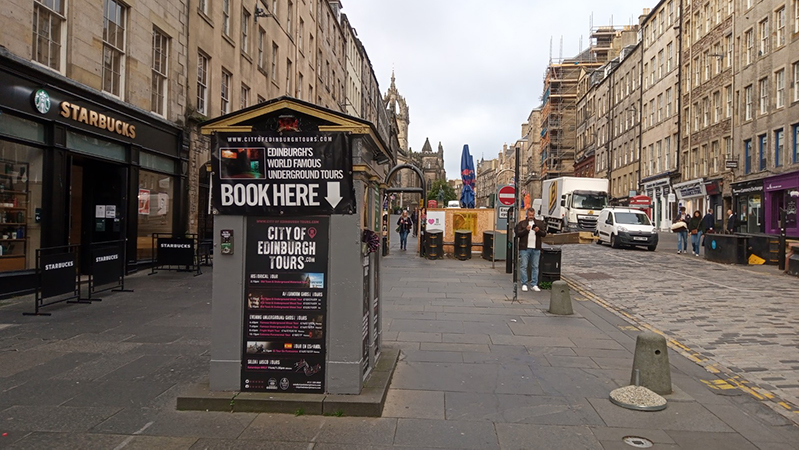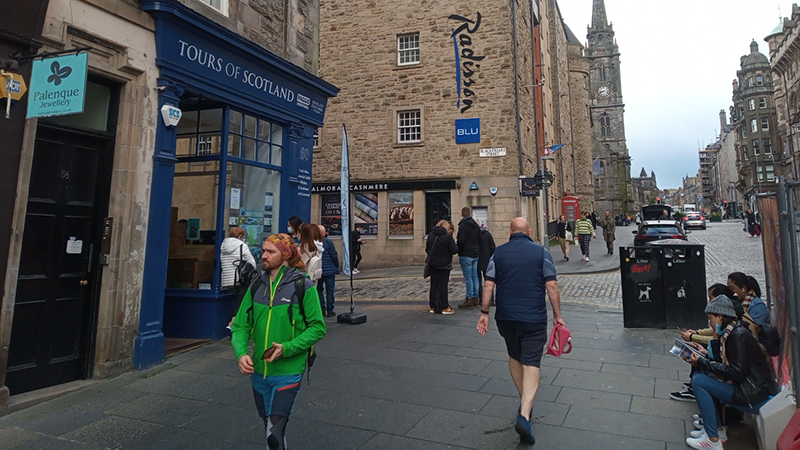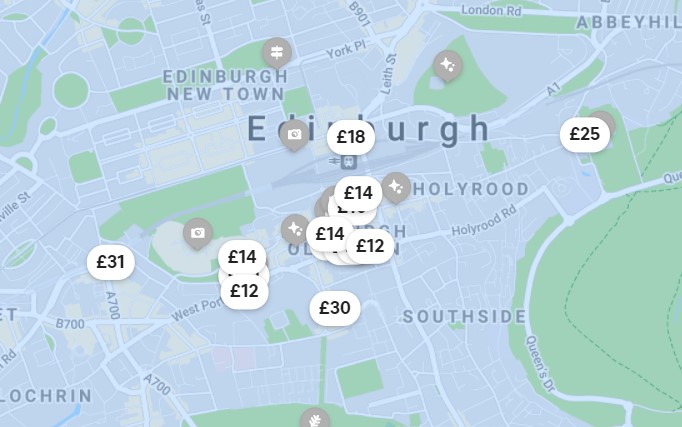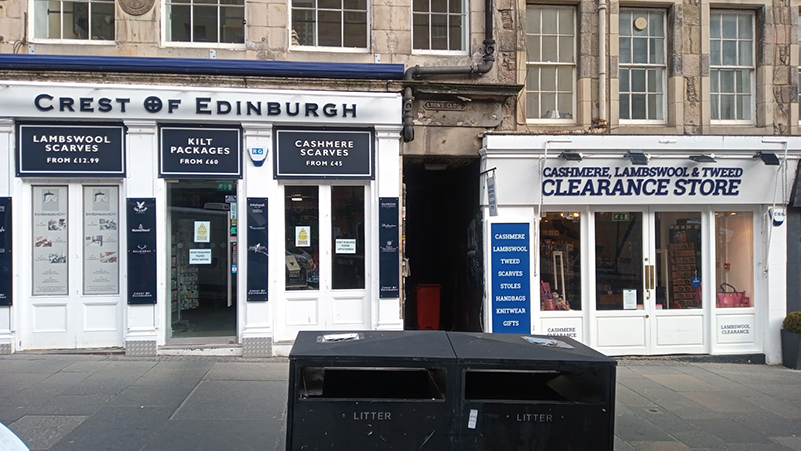As noted in our blog earlier this month, the forthcoming Planning Committee of 29 September will be hugely important in understanding how the Council plans to manage short-term letting in the city over the next decade. Documents for the Committee were published online yesterday, and show that Council Officers are clearly seeking to address this thorny issue head-on through the Council’s Proposed Local Development Plan. Angus Dodds has pored over the relevant sections of Proposed City Plan 2030 and sets out his own thoughts on why the suggested approach leaves him feeling a little uneasy.

Proposed City Plan 2030
Earlier this month I commented that there was something of a contradiction in the supporting Committee papers that introduced Edinburgh’s proposed new ‘short term let control area’. I was puzzled by the assurance that ‘the designation of a short-term let control area … does not mean a blanket ban on such uses: each case will have to be assessed on its own merits’, while the same paper also noted that ‘regular use of any tenement flat as a short term let is inconsistent with tenement living and generates a high number of complaints to the Council’. My concern was that this last statement seemed to leave very little wriggle room for circumstances where the Council would actually support such uses.
I felt reasonably reassured though that the Council’s earlier ‘Choices for City Plan 2030’ document published in January 2020, had stated that the proposed new policy on the loss of homes to alternative uses would set out criteria where such losses would be acceptable. I also noted the comments of the Council’s planning convener yesterday evening that Edinburgh has almost a third of all the short term lets in Scotland, and that policies in the new plan would help the Council to ‘manage’ these.
Accordingly, I was rather surprised by what I found in the eagerly awaited Committee papers last night. Having been through all the Housing policies in the Proposed Plan, it does seem (unless I’m missing something fundamental) that there are really no crumbs of comfort at all for the short-term letting sector within the document. There are frankly very few instances where such changes of use will be considered as being acceptable.
The clearest indication of this does come in the proposed new ‘Loss of Housing’ policy (HOU7). This unequivocally states that “proposals which would result in the loss of residential dwellings through demolition or a change of use will not be permitted, unless in exceptional circumstances, where it would provide necessary community facilities without loss of amenity for neighbouring residents”. Off the top of my head, I’m struggling to think what such circumstances might look like in practice.

Could the council approach this differently?
Given this is the first time that text for a ‘Loss of Housing’ policy has been seen, the immediate big question has to be whether the policy as currently framed is the optimal way for the Council to deliver the additional housing it seeks, while having the least detrimental impact on other aspects of the city’s life.
My blog earlier in the month noted that from a tourism standpoint, hotel supply is not there to plug the large gaps that will be created if short-term lets simply disappear overnight; especially as the City’s tourist economy is forecast to continue its growth. The Proposed Plan itself recognises that ‘there is scope for further growth in the visitor accommodation sector over the lifetime of the City Plan 2030’. Anecdotally, the 100-bedroom hotel round the corner from my flat has been full every weekend in September, with occupancy rates well above 90% during the week.
Accordingly, while policy HOU7 might in some quarters seem a most satisfying tool with which to burst the ‘Airbnb bubble’, the policy will almost certainly lead to a quite sudden dearth of visitor accommodation across the city. The reality is that the short-term let accommodation ‘bubble’ has actually been fairly slowly inflating over the last decade or so. A more controlled way to move back to more residential uses without seriously impacting the tourism industry (which currently employs c.31,000 in the city) would surely be to let the air out of this gradually.
An obvious way to do this would be by using planning conditions. Simple planning conditions could easily ensure that permissions sought within the short term let control area are only granted on a temporary basis. Planning permissions to continue to allow such uses for perhaps 5 years would prevent a sudden loss of supply, while also providing clear market certainty to hotel developers that are either about to start building, or who are looking at their longer-term pipeline of sites. It would also help to quickly dissuade anybody considering the short-term letting market in Edinburgh as an attractive investment opportunity.
The Loss of Housing policy also strikes me as being a little quixotic if the intention is that all areas of the city will become truly residential again as a result of its controls. It’s interesting to think that the Proposed City Plan 2030 will probably be at Examination for the bicentenary of George IV’s famously tartan-tastic visit to Edinburgh in August 1822. Looking around the High Street and Lawnmarket today, it’s fair to say that even Sir Walter Scott couldn’t have concocted a more overblown Scottish stage-set than the one that has evolved here in recent decades. Yet, this hasn’t emerged as a result of short-term letting. Areas of the city’s life that planning has no control over – tartan gonk shops, tour guides in capes, wall-to-wall bagpipers, and a bewildering range of tour buses are the components that have really defined this area’s character today. Airbnb’s other innovation ‘Airbnb experiences’ shows that the Royal Mile and its immediate surroundings is without a doubt where the action’s at for tourism in the capital.

The accretion of these types of function has meant that such areas are generally loved by tourists and generally avoided by locals. Like it or not, staying in an Edinburgh tenement on the High Street (rather like staying in a riad in Marrakesh, or a trulli in Puglia) does hold a certain appeal to the visitor that is perhaps not shared by local people. In areas which are already well-established as providing tourist accommodation, the trundle of wheeled luggage is maybe less of an issue today than the playing of bagpipes all afternoon might become to permanent residents if they are all forced to return to a residential use. This incidentally is a view that is broadly shared in a recent decision from one of the Scottish Government’s Appeal Reporters.
HOU7 as currently drafted simply doesn’t take any account of these small but quite exceptional zones within the city where in my opinion it would be entirely appropriate to allow for the continued presence of short-term lettings to augment other forms of visitor accommodation. A tightly defined area where such accommodation can be provided – rather like a retail core – centred perhaps on the High Street, Cockburn Street and Victoria Street, would seem a more pragmatic way to sensibly ‘manage’ such accommodation.

Depending on the outcome of next week’s Committee, consultation on the Proposed Plan is intended to begin on 7 November 2021 for 6 weeks till mid-December. Contour Town Planning will be watching the events of next week with great interest. If you are considering a planning application for a short-term let property, or potentially making representations to Proposed City Plan 2030, or if you would just like to chat through any of the issues raised, please don’t hesitate to get in touch.
